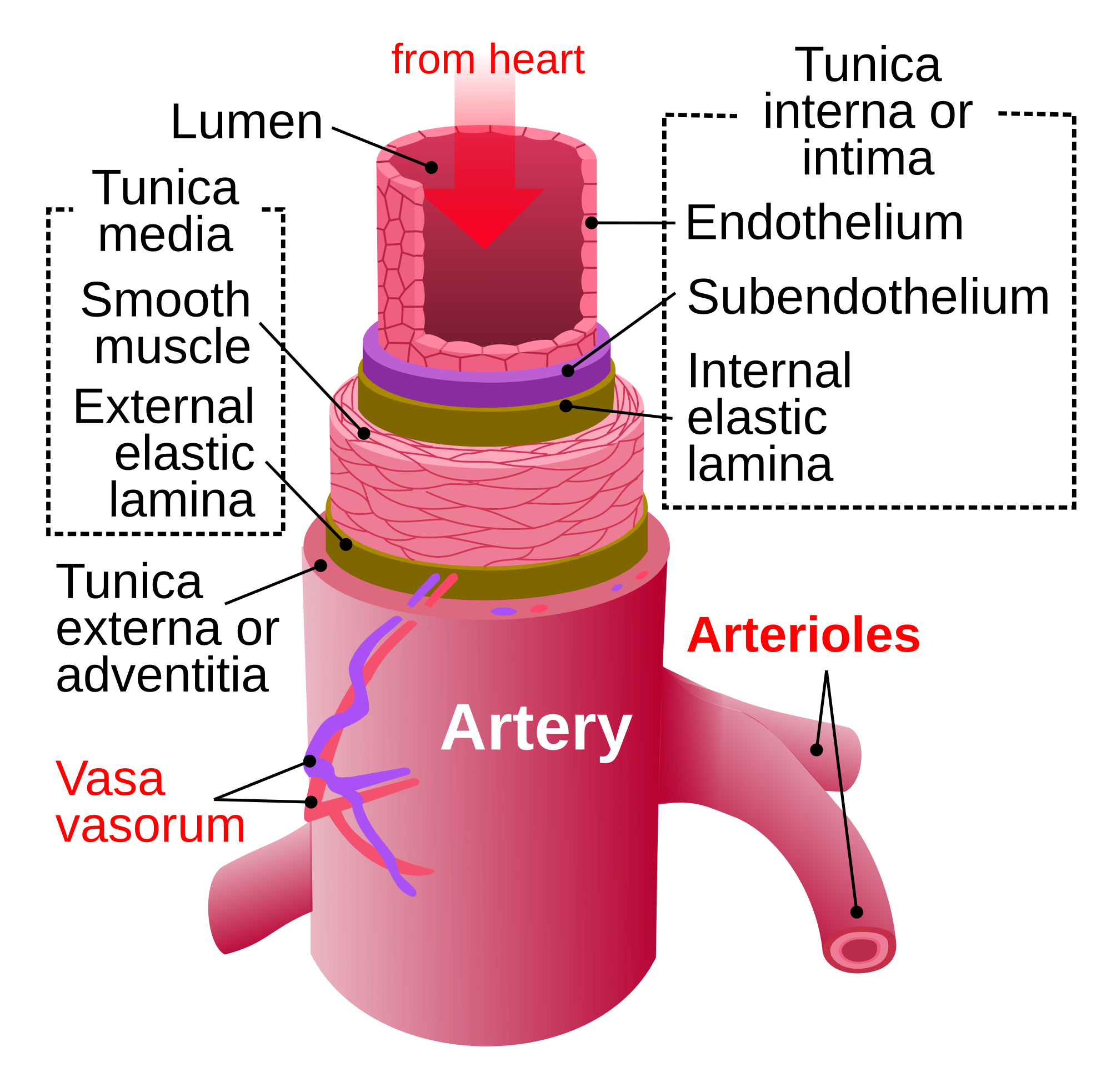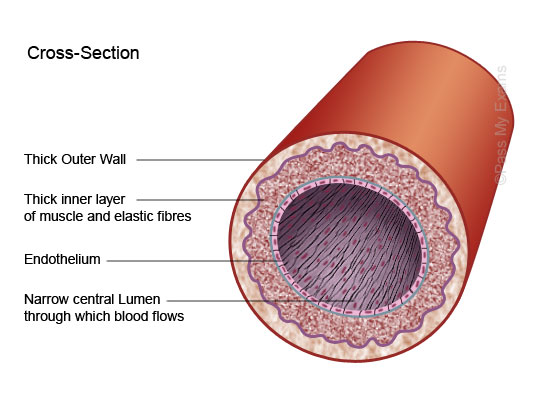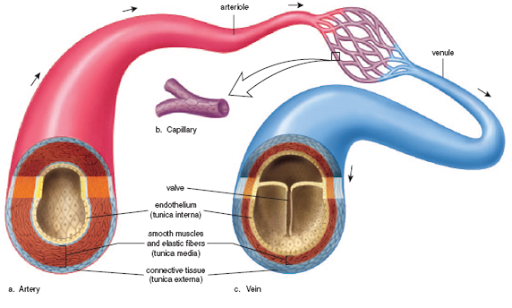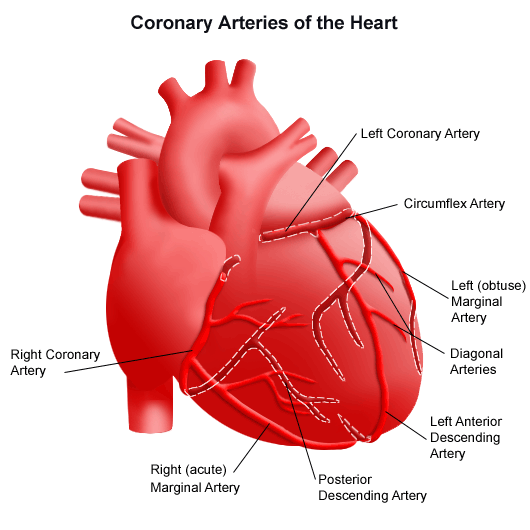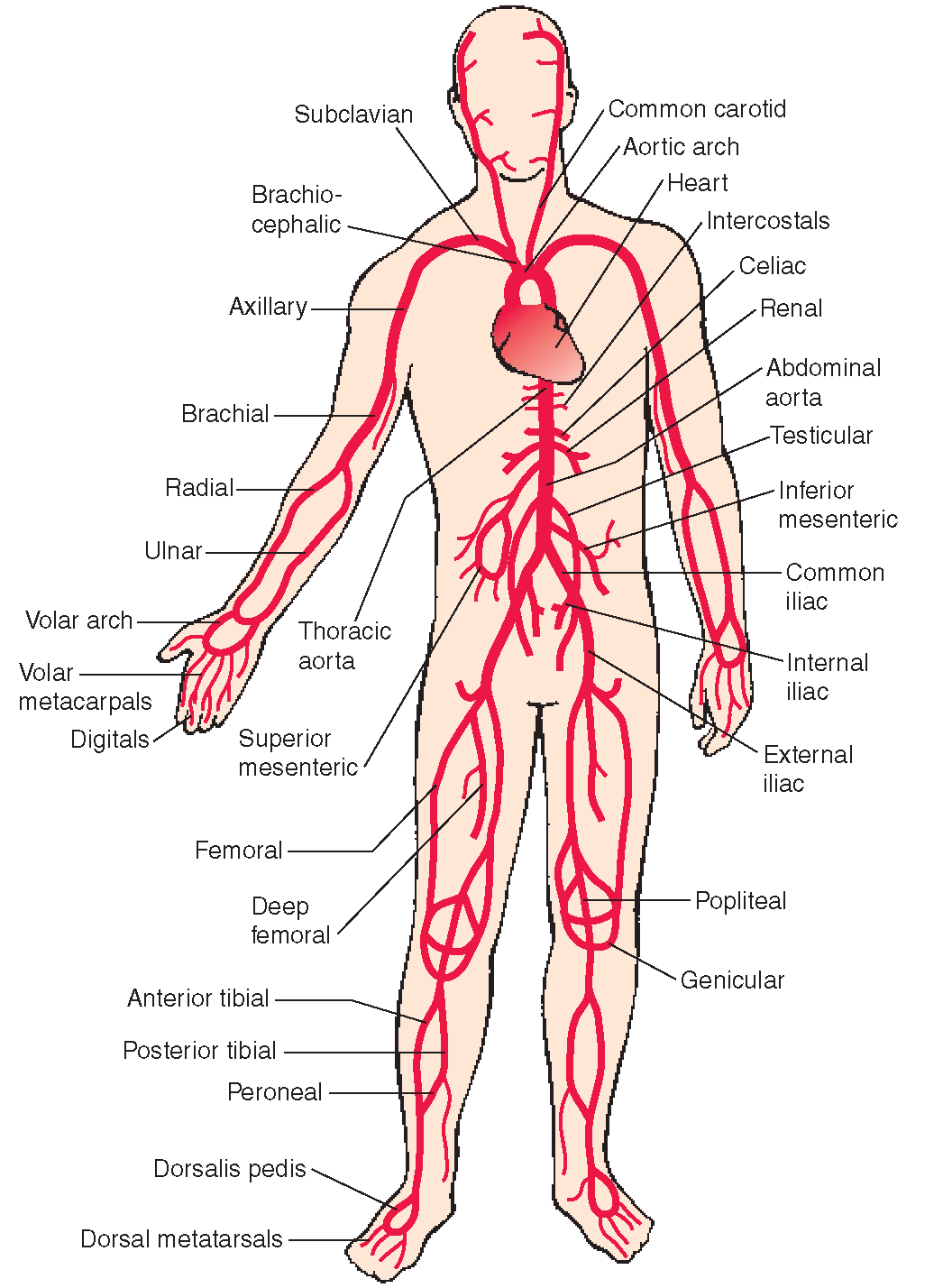Artery
The artery (Greek αρτηρία, from Ancient Greek αείρειν, - " tethered", " together ", meaning " the [ the pericardium ] Attached " ), is a blood vessel that leads away the blood from the heart. It is named after the noticeable on large arteries pulsing of the heartbeat also artery or artery. Their construction should keep the blood pressure generated by the heart as stable as possible. In the large so-called systemic circulation the arteries carry oxygen-rich blood (old term " arterial blood " ) away from the heart. The arteries of the pulmonary circulation, however, contain deoxygenated blood. In the arteries of man is only about 20% of the total blood volume are included.
The largest artery in the human body is the aorta, or main artery with a diameter of about three centimeters.
The blood vessels that carry blood to the heart are called veins.
Types
Depending on the function and localization arteries must satisfy various claims and therefore also differ in their structure:
- Muscular type ( arteries myotypicae ): these smaller arteries are relatively away from the heart ( peripheral) and are known as resistance vessels, including through their smooth muscle heavily involved in the maintenance of blood pressure, since they can produce the required blood pressure by narrowing their diameter ( do they this does not, then one speaks of orthostatic dysregulation with vertigo and dizzy spells esp. after getting up )
- Elastic type ( arteries elastotypicae ): These large, close to the heart vessels convert physiologically pulsatile blood flow, the ( systole ) is the jerky heartbeat caused to by its elastic ability to vibrate in a quasi-continuous flow - the so-called Windkessel function - and thus protect in the periphery of the circulation to organs and tissues from dangerous blood pressure spikes or - " valleys ". When arteriosclerosis this vibration characteristic is greatly reduced or totally extinguished, resulting in permanent, morbid hypertension up to hypertensive crisis, transient ischemic attacks ( short-term, due to low blood pressure awareness losses ), stroke ( by massive bleeding is too high or lack of supply in case of low blood pressure ) or the rupture of a vessel outpocketing ( an aneurysm ) may open.
- Mixed type: the transitional form of muscular to the elastic type is referred to as a mixed type or arteries mixtotypicae.
- Blocking arteries ( arteries convolutae ): here is the arteries, which can narrow their lumen to the extent that no blood flow occurs. For this, they have a special wall structure evidences a type of its own. In the vessel wall is oriented along the direction of flow smooth muscle.
Wall construction
The vessel walls of arteries are thicker (muscle- rich ) have a much more pronounced stratification and are more ductile than the veins.
Basically, an arterial wall consists of three layers, whose constituents bear all Latin anatomical names; seen from the blood-carrying side of these are:
- The tunica intima (also intima ) consists of a layered endothelium, the layer of loose connective tissue that build and the subendothelial stratum, thereafter the membrana elastica interna ( particularly well developed in the muscle, peripheral arteries).
- The tunica media (or a short media ) is composed in the peripheral artery of a plurality of closely adjoining, annular and helical winding muscle layers include elastic fibers and those made from collagen, a similar structure in the elastic arteries, but with more collagen and many vibratable and fenestrated membranes ( partially located between the media and the adventitia additionally a membrana elastica externa)
- The tunica externa (also known as tunica adventitia ), which consists primarily of collagen and elastic, fibrous connective tissue and their vasa vasorum ( the vessels of the vessel ), and feeds the nervous, and controls overall artery.
Large arteries
- Aorta ( main artery )
- Axillary artery ( axillary artery )
- Basilar artery ( skull base artery)
- Brachial artery ( brachial artery )
- Common carotid artery ( carotid artery )
- Central retinal artery (central artery of the eye)
- Facial artery (facial artery)
- Femoral artery ( femoral artery )
- Common iliac artery ( common iliac artery )
- External iliac artery ( external iliac artery )
- Internal iliac artery (internal iliac artery )
- Maxillary artery ( maxillary artery)
- Inferior mesenteric artery ( lower visceral artery)
- Superior mesenteric artery ( artery upper intestines )
- Ovarian artery ( ovarian artery)
- Radial artery ( radial artery )
- Renal artery ( renal artery )
- Subclavian artery ( subclavian artery)
- Testicular artery (testicular artery)
- Ulnar artery (Ellen artery )
- Vertebral artery ( vertebral artery)


